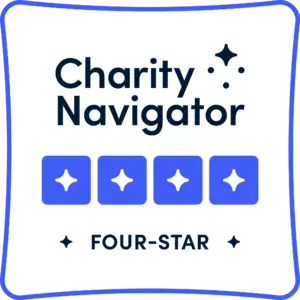This is a guest post by Amy Seglund, and the 2023 recipient of Bird Conservancy’s Richard G. Levad Award.
My journey toward a love for birds began in Central America during my Peace Corps years in Guatemala. Working as a volunteer, I was tasked with cataloging all bird species in a newly designated wildlife refuge and sprawling freshwater lowland jungle called Bocas Del Polochic. Working with local rangers hired to protect the refuge, we roamed the area via dugout canoe documenting the vast assemblage of different bird species. I also was able to work with a Guatemalan graduate student to assess effects of slash and burn agriculture on bird densities and community composition. Experiencing the amazing diversity of avian life in Central America was magical, awe inspiring, and reshaped my future from a desire to work with mammalian carnivores into a desire to focus on birds.
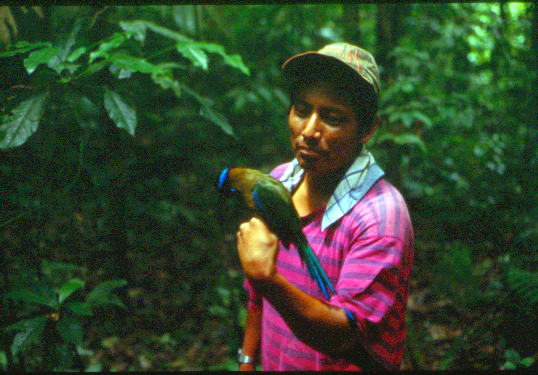
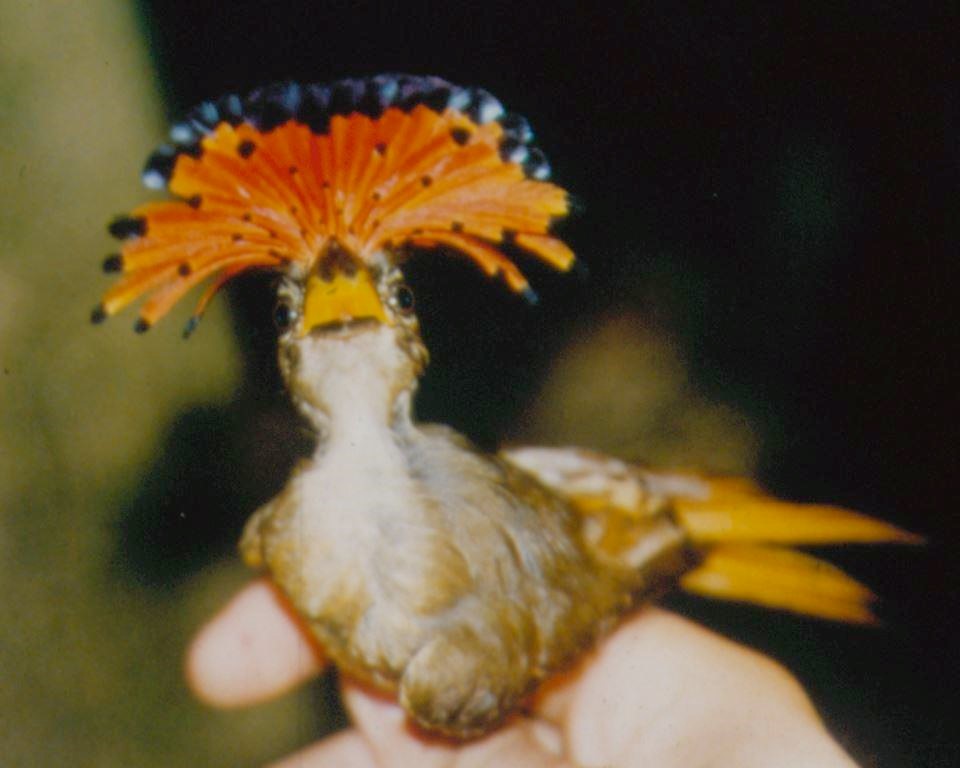
Returning to the States, I worked on a number of different avian projects studying Black-capped Vireos, Yellow-billed Cuckoos, Grasshopper Sparrows, Bobolinks, and Peregrine Falcons. However, one fate-filled morning when I first moved to Colorado to work with Colorado Parks and Wildlife and I was conducting my first breeding bird atlas block in the Weminuche wilderness, I was awakened in the dark pre-dawn hours by a series of eerie screeching calls. I had no idea what it might be, but the sounds continued all around and above the tent so the culprit must be flying! As I started the atlas survey that same morning I eventually figured out what I had heard – the territorial flight scream of a male White-tailed Ptarmigan! With that first introduction to this hearty bird, I was determined to study White-tailed Ptarmigan in alpine habitats of Colorado.
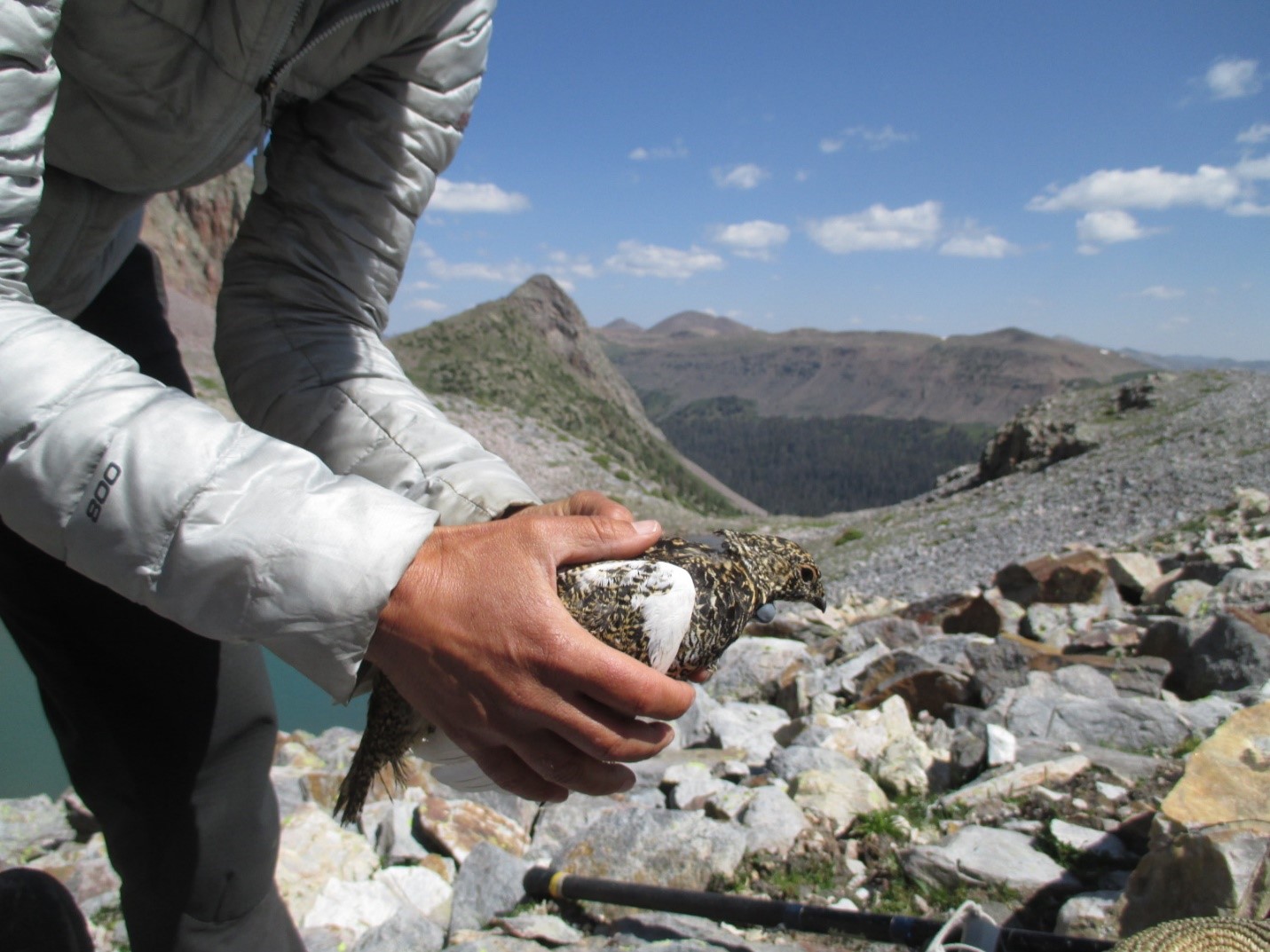
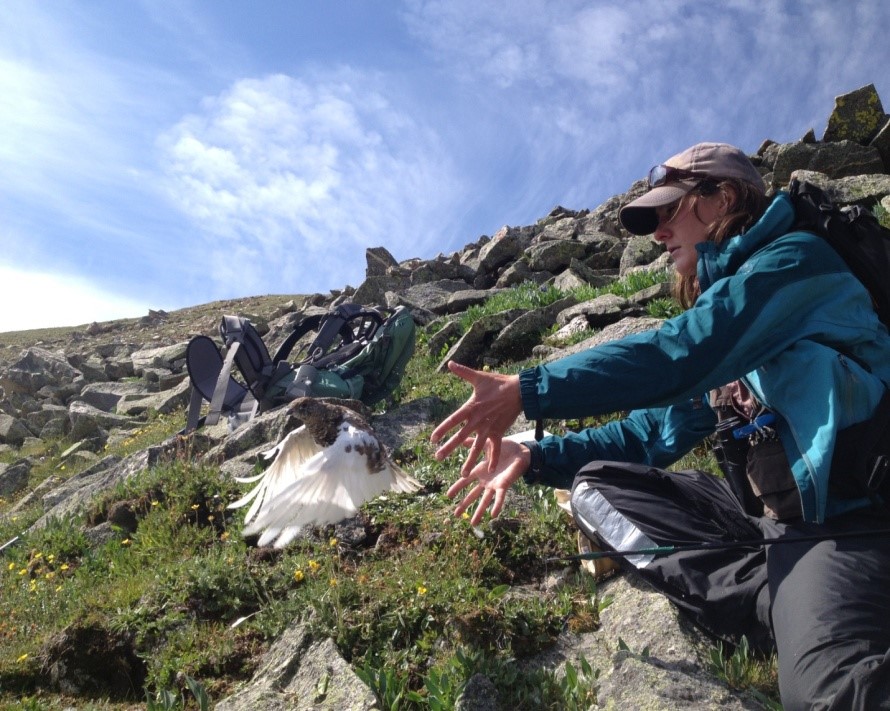
The southern White-tailed Ptarmigan is a subspecies almost endemic to Colorado and was considered for listing under the US Fish and Wildlife Service Endangered Species Act in 2010. While the US Fish and Wildlife Service is responsible for listing determinations, Colorado Parks and Wildlife evaluates the status of species in the state. For me, as a Colorado Parks and Wildlife Species Conservation Coordinator, that meant a commitment of seven years of intense field work, and as a lover of Colorado’s alpine habitat and now the ptarmigan, that was my dream assignment. My work focused on determining the statewide population which required banding birds with unique color bands for individual recognition. I also radio-collared birds to determine nest success, seasonal survival, and movement. The results of this exhaustive work were positive as the White-tailed Ptarmigan appeared to be a resilient species that was well distributed across alpine habitats with stable population numbers. Based largely on these findings, the US Fish and Wildlife Service announced in 2020 that an Endangered Species listing of the bird was not warranted. Though the southern White-tailed Ptarmigan was not listed, I have not let my guard down and have continued to monitor this iconic alpine species. Recent warmer breeding season temperatures and lack of summer monsoonal moisture appear to have reduced female occupancy rates and reproductive output meaning additional conservation efforts may be needed as the abiotic environment continues to change and ever increasing human recreation alter alpine habitats.

Not only have I been lucky enough to work in the alpine, but over the last five years I have been able to work on one of Colorado’s most vocal and detectable species – the Pinyon Jay. Though this bird can appear to be a common species in our pinyon-juniper forests, the species is thought to be in steep population decline and researchers are unsure why. Pinyon Jays are fascinating gregarious members of the Corvid family with very large home ranges, but return to breeding sites where they nest together in loose colonies. My work has focused on documenting breeding behaviors, mapping breeding colony boundaries, assessing breeding colony site fidelity, and evaluating hatching and fledging success. This work is terribly addicting and I find myself always listening for Pinyon Jays and looking for nests in pinyon-juniper forests. Because these birds are such early nesters, my husband and I now spend our Valentine’s Day searching for nest-building Pinyon Jays. My research on nest success has indicated that the Common Raven may be an unrealized impediment for breeding Pinyon Jays. This work has also been important for mapping known colony boundaries and providing locations to public land managers who are implementing woodland and wildfire treatments so they can avoid nesting Pinyon Jays or implement vegetation treatments that may be beneficial for Pinyon Jays. I have been able to engage in a number of workshops to educate other biologists and community science groups on completing Pinyon Jay surveys to identify potential breeding areas.
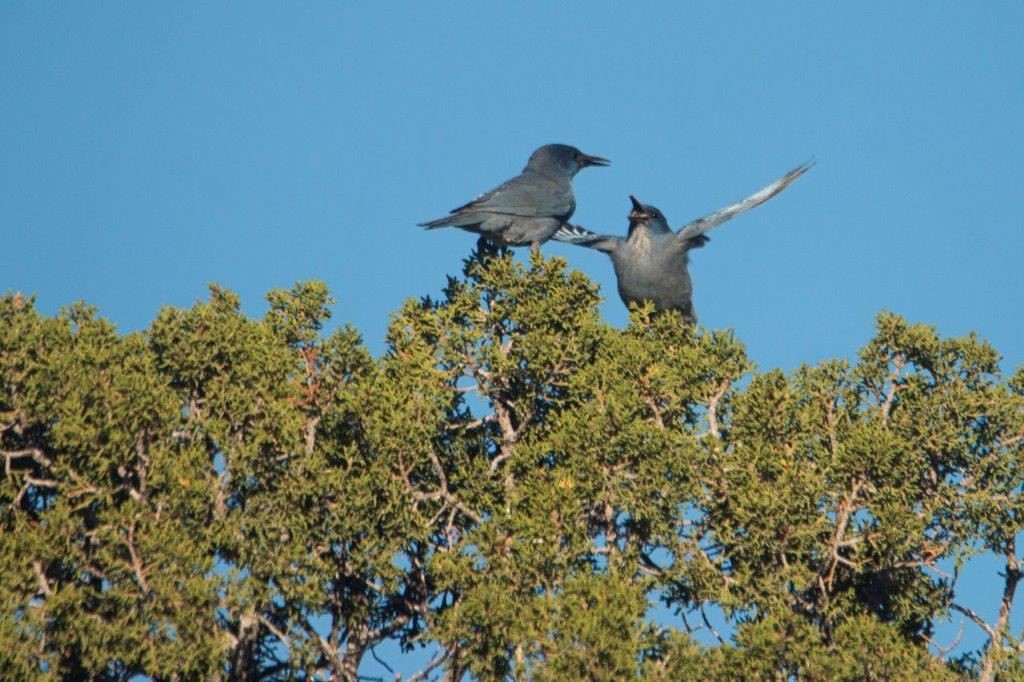
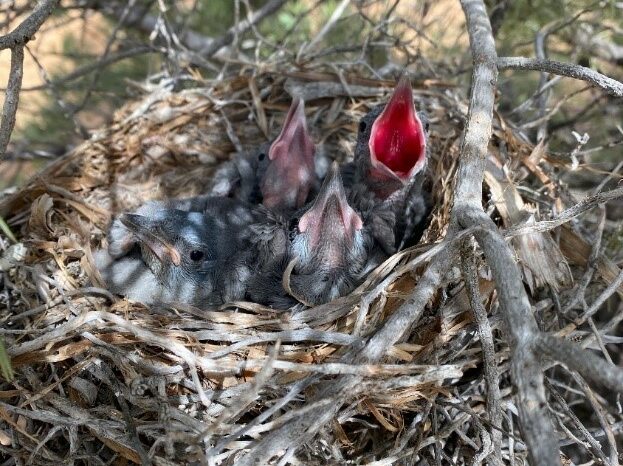
I have been so fortunate to pursue this love for birds in my career, and to conduct research to aid avian conservation. The joy of my research has been greatly enhanced by the numerous technicians I have had the pleasure to hire and work with. It inspires me to work with developing young scientists and to see their enthusiasm while studying birds in native habitats. Many of my technicians have gone on to graduate school and some have joined the work force with Colorado Parks and Wildlife. Their motivation is infectious, keeps me young, and provides the additional incentive for me to work tirelessly to help understand avian communities.
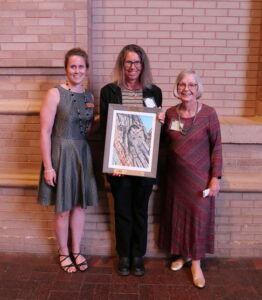
This blog was written by Amy Seglund, who was the 2023 recipient of the Bird Conservancy’s Richard G. Levad Award.





